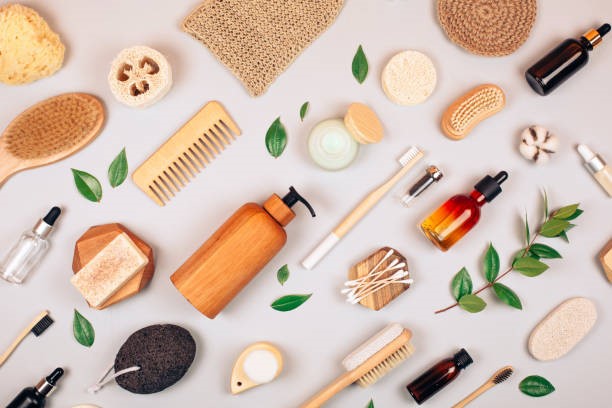
Sustainable Products develop Sustainable Packaging
The demand for sustainable products has seen a dramatic rise in recent years, driven by both consumer preferences and regulatory changes. Alongside these products, sustainable packaging has become essential as companies strive to reduce waste, lower carbon emissions, and conserve resources. But how exactly do other sustainable products influence sustainable packaging design? In this article, we’ll explore the synergy between sustainable products and packaging, how they’re interlinked, and the innovations inspired by this intersection.
Sustainable products and packaging go hand in hand in creating a fully green product experience. Today’s environmentally-conscious consumers expect that eco-friendly products are matched by equally eco-friendly packaging. Sustainable packaging involves recyclable, compostable, or reusable materials that leave a minimal ecological footprint, aligning with the principles of sustainable products. For instance, organic food products, biodegradable cleaning supplies, and reusable household items often influence and lead to sustainable packaging solutions.
How Sustainable Products Inspire Innovative Packaging Solutions
1. Plant-Based Products and Biodegradable Packaging
Products made from plant-based materials, like bio-plastics, bamboo utensils, and natural fiber clothing, are pioneering sustainable alternatives. These materials provide a strong foundation for compostable and biodegradable packaging solutions. For example:
• Biodegradable Films: Plant-based products encourage the use of biodegradable films, which decompose more easily than traditional plastics.
• Natural Fiber Packaging: Sustainable products have led to the use of natural fibers like hemp, bamboo, and jute for packaging, making it more sustainable and compostable after use.
By using plant-derived materials, sustainable products make packaging fully biodegradable and further reduce landfill waste.
2. Reusable Products and Zero-Waste Packaging
The rise of reusable products such as stainless-steel water bottles, glass containers, and cloth shopping bags has led to packaging innovations that prioritize reuse. Companies in this sector avoid disposable packaging altogether, leading to:
• Minimalist, Durable Packaging: For reusable products, brands often opt for simple, sturdy packaging that consumers can keep and reuse, like glass jars or metal tins.
• Returnable and Refillable Systems: Products in the beauty, home cleaning, and food industries have developed refillable packaging solutions, allowing customers to return or refill containers to reduce waste.
This trend has brought a new era of zero-waste packaging that reduces reliance on single-use materials and encourages consumers to participate in circular systems.
3. Eco-Friendly Cleaning Products and Reduced-Plastic Packaging
Sustainable cleaning products, especially those free from harsh chemicals, have influenced the development of reduced-plastic and non-toxic packaging. Examples include:
• Concentrate Formats: Concentrated formulas in eco-friendly cleaning products reduce packaging volume, resulting in fewer emissions during transport.
• Recycled and Recyclable Materials: Packaging for eco-friendly cleaning supplies often includes recycled plastic or post-consumer materials, which are recyclable and lower in environmental impact.
These solutions not only support a reduced plastic footprint but also ensure the packaging remains consistent with the sustainable principles of the products inside.
4. Organic Food Products and Compostable Packaging
The organic food industry has been instrumental in driving the use of compostable packaging, as it complements the product’s natural appeal. Some notable packaging advancements include:
• Compostable Films: Organic snacks and produce often come in compostable films made from cornstarch or cellulose, which can break down naturally.
• Bioplastic Alternatives: Compostable bioplastics made from natural materials, like polylactic acid (PLA), are commonly used to package organic foods, offering a green alternative to petroleum-based plastics.
This eco-conscious approach supports a closed-loop lifecycle, where the packaging can be composted along with organic waste, returning nutrients to the soil.
5. Waterless Beauty Products and Reduced Packaging
Waterless products in the beauty and personal care industry, such as solid shampoo bars, toothpaste tablets, and powdered cleansers, have eliminated the need for bulky plastic containers. With less need for protective or moisture-resistant packaging, these products are often wrapped in minimal, biodegradable materials, including:
• Recycled Cardboard and Paper: Waterless products use recyclable paper or cardboard, which are lightweight and biodegradable, reducing plastic waste.
• Metal Tins and Glass Jars: Solid beauty products are sometimes packaged in durable, reusable containers like metal tins and glass jars, aligning with the eco-friendly, waste-free concept.
For brands looking to lead in both sustainable products and packaging, it’s crucial to prioritize materials that support closed-loop systems and consider the entire lifecycle of the packaging. As sustainable product innovations continue to emerge, the possibilities for greener, more circular packaging solutions will only expand, bringing us closer to a waste-free world.







